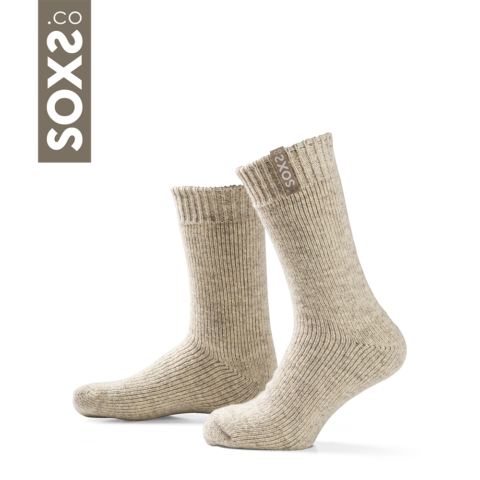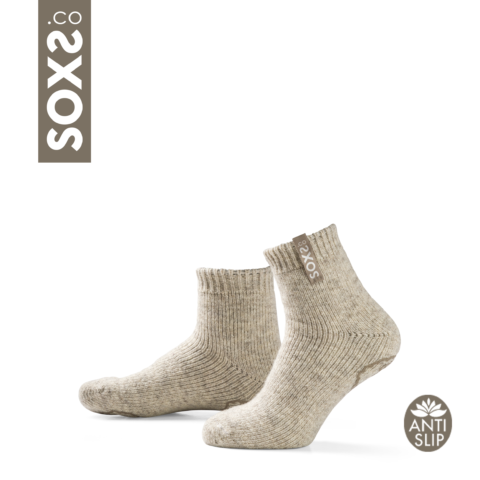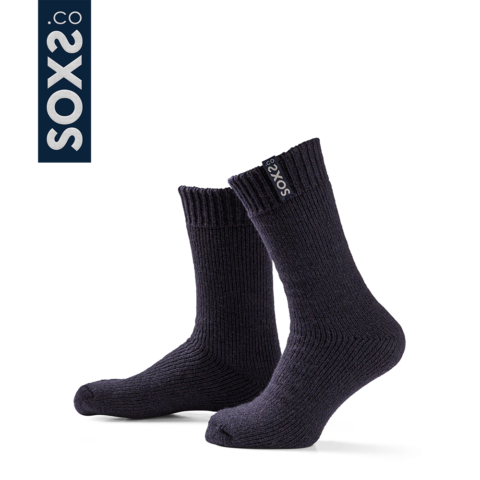Order before 4 p.m. and get same day shipping!
100 % itch free wear comfort!
Warning: SOXS are addicting!
When temperatures drop, keeping your feet warm becomes essential for your overall comfort. The right pair of extra warm socks makes a significant difference whether you’re enjoying outdoor activities or relaxing at home. Quality wool socks provide the insulation your feet need during cold weather. Here’s what makes warm socks work and how to find the perfect pair for winter comfort.
Extra warm socks provide superior insulation in cold temperatures, even down to -20°C. Unlike regular socks, they’re crafted with materials that retain heat while allowing your feet to breathe. Organic wool stands out as an excellent choice due to its natural insulating properties and ability to manage moisture, keeping your feet both dry and warm.
Modern wool socks often combine natural fibers with synthetics to improve durability and fit. Sustainable options, like those made from New Zealand sheep wool, offer warmth while maintaining environmental responsibility. These socks are designed to be comfortable against your skin without the itchiness sometimes associated with wool.
The effectiveness of warm wool socks comes from their structure and materials. Wool naturally traps heat around your feet, creating a protective barrier against cold temperatures. This insulation is vital in winter conditions as it maintains a comfortable temperature for your feet.
Beyond warmth, quality wool socks manage moisture effectively. By drawing sweat away from your skin, they prevent the dampness that can make feet feel cold. Many warm socks also include cushioning and arch support, providing extra comfort during extended wear.
When selecting warm socks for cold weather, consider both the material and construction. Wool offers excellent insulation, while blended fabrics can provide additional elasticity and durability. For those concerned about environmental impact, sustainably sourced wool socks are an excellent choice.
Proper fit plays an important role in keeping your feet warm. Your socks should fit snugly without being restrictive, ensuring optimal insulation. If you’re planning activities like hiking or skiing, look for socks with additional cushioning to enhance comfort during these more demanding activities.
Warm socks serve as practical solutions for various winter situations. They provide essential protection for outdoor enthusiasts during hiking, skiing, or snowshoeing adventures. People working in cold environments benefit from the consistent warmth these socks provide throughout the day.
Families can ensure everyone stays comfortable with options like wool socks for kids and warm baby socks. Whether you’re taking a winter walk, running errands in cold weather, or simply relaxing at home, quality wool socks keep your feet comfortable in changing temperatures.
Some people worry about wool socks being too warm, especially when moving between outdoor and indoor environments. Quality wool socks address this by naturally regulating temperature and wicking moisture, helping your feet adapt to changing conditions.
Another consideration is thickness. While warm socks provide insulation, they shouldn’t make your shoes uncomfortable. Look for socks designed with a balanced profile that offers warmth without excessive bulk, ensuring they work well with your regular footwear.
When comparing wool socks to alternatives like heated socks or synthetic liners, natural wool offers distinct advantages. While heated options require batteries and maintenance, and liners often lack sufficient insulation on their own, wool socks provide reliable warmth without additional components.
Quality wool socks deliver a sustainable, low-maintenance solution that combines warmth, comfort, and environmental responsibility. Their versatility makes them suitable for various activities and weather conditions, providing consistent performance throughout the winter season.
Curious about which warm wool socks might suit your winter activities best? Discover our collection of sustainable, comfortable options at soxs.co.

Calf height

Ankle height

Calf height